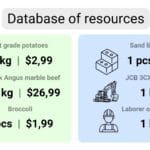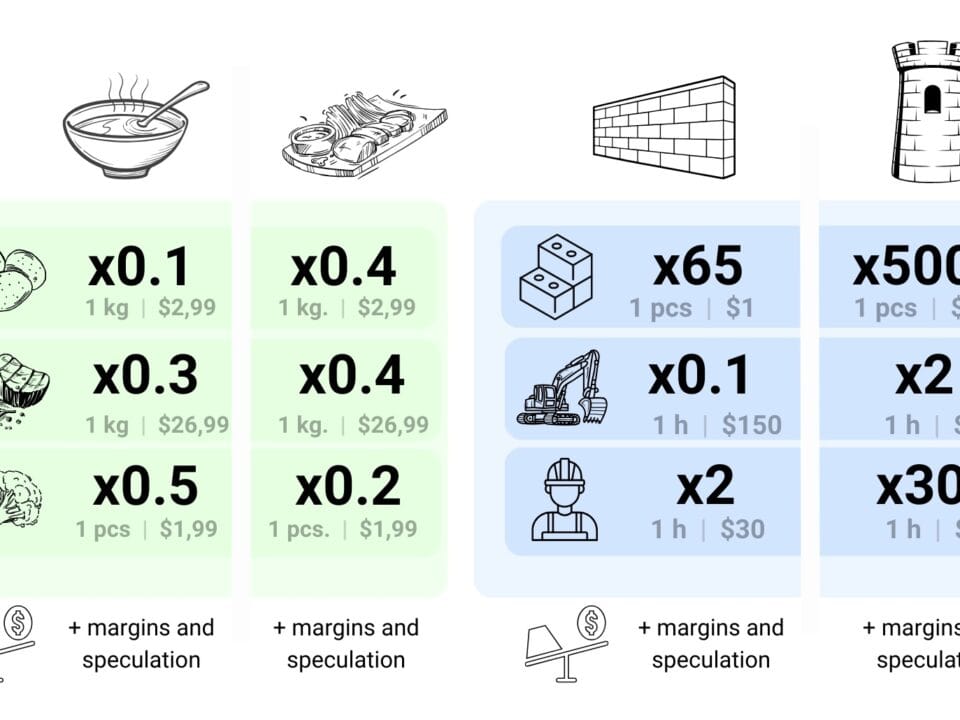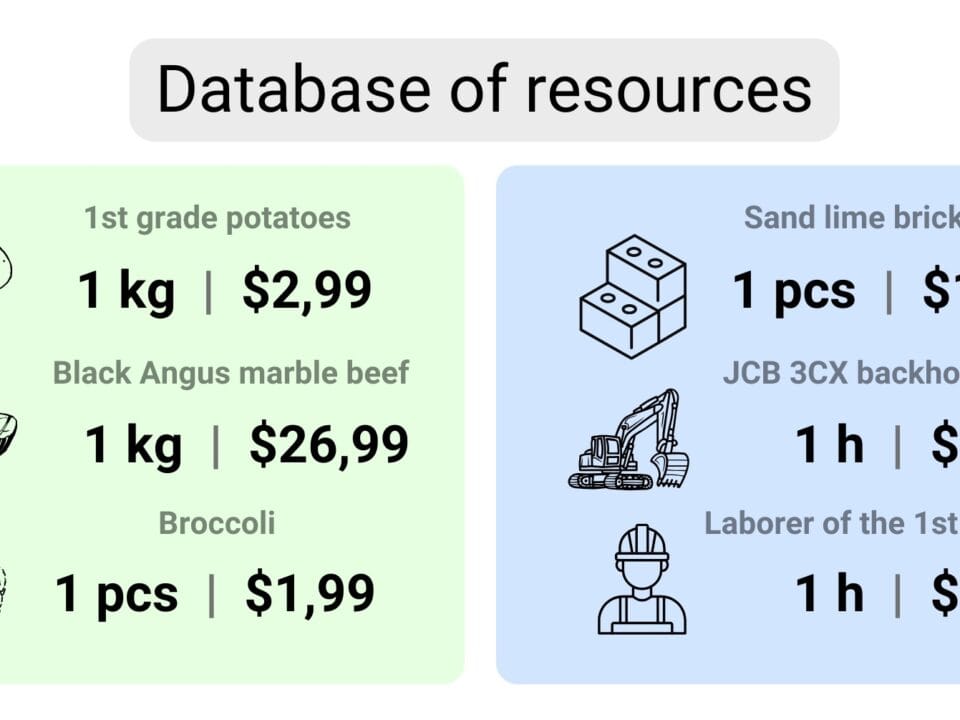Resource-based costing is a method of management accounting, in which the cost of a project is formed on the basis of direct accounting of all resources involved. In construction, this approach involves a detailed analysis and evaluation of all material, labor and technical resources required to perform the work.
The resource-based method, provides a high degree of transparency and accuracy in budget planning, as it focuses on actual resource prices at the time of estimation. This is particularly important in an unstable economic environment where price fluctuations can significantly affect the overall cost of a project.
In the following chapters, we will look in detail at the resource-based costing process. In order to better understand its principles in construction, we will draw an analogy with the calculation of the cost of a dinner in a restaurant. The restaurant manager, planning the evening, makes a list of necessary products, takes into account the cooking time of each dish, and then multiplies the costs by the number of guests. In construction, the process is similar: for each category of project elements (objects), itemized estimates are generated recipes, and the total cost of the project is determined by summing up all the costs in the total bill – the final estimate by category.
The key and initial stage of the resource-based approach is the creation of the company’s initial database. At the first stage of costing, a structured list of all items, materials, types of work and resources that the company has at its disposal within the framework of its construction projects – from a nail in the warehouse to the description of people through their qualifications and hourly rate – is compiled. This information is systematized into a single “Construction Resources and Materials Database” – a tabular register containing data on names, characteristics, units of measurement and current prices. It is this database that becomes the main and primary source of information for all subsequent resource calculations – both cost and timing of works.





















